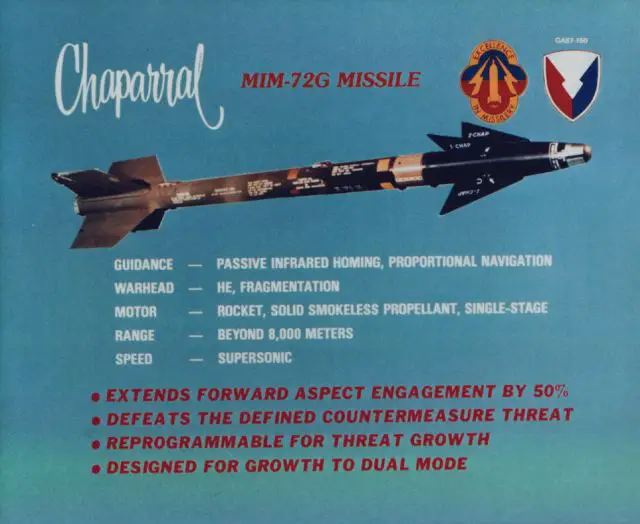- Army
- Conflicts in the world
- Israel - Iran conflict 2025
- Pakistan - India Conflict 2025
- Russia Ukraine War 2022
- Libya conflict day by day
- HAMAS - Israel War 2023
- Operation Serval in Mali French Army
- Sangaris operation Central African Republic
- Sangaris opération militaire République Centreafrique
- Ukraine - Russia conflict
- Syria conflict news
- Defence & Security Industry Technology
- Armies in the world
- Analysis Defense and Security Industry
- Conflicts in the world
- Navy
- Air
Syrian IS home-made air defense missile systems are not threats according Russian military expert TASS 11901163
|
|
|||
|
The conflict in Syria
|
|||
|
|
|||
| Syrian IS home-made air defense missile systems are not threats according Russian military expert. | |||
|
The development of an improvised surface-to-air missile system by the Russia-banned Islamic State terrorist group may be a false-flag operation by Middle East states to supply IS with such systems, Russian military expert Col. Mikhail Khodaryonok told TASS on Tuesday, January 19, 2016.
|
|||
|
|
|||
|
|
|||
|
Attempts to develop a makeshift AD missile system are set to fail, the expert said. "Firstly, the integration of components made by different manufacturers will encounter technical problems that can be resolved only by skilled professionals at a factory. Secondly, even if the terrorists succeed in resolving the problems, it is impossible to launch even short-run production in the field," Khodaryonok said.
"Usually, thousands of SAMs are used in a war. There is simply no way the terrorists can obtain that many missiles. A radar surveillance system and an automated battle management system are required to set up effective SAM defenses," the expert added. Khodaryonok stressed that several experimental launches with questionable accuracy was all the terrorists might achieve. "Russian aircraft deliver their ordnance from medium and high altitudes, and at least medium-range air defense systems have to be used to counter them effectively. Improvised SAM launches by the terrorists will be a demonstration at best," Khodaryonok noted. Probably, the SAM system development by IS may be used by Middle East states as a cover for supplying the group with air defense missiles, the expert summed upped. Earlier, the Sky News television channel reported that IS was developing a makeshift SAM system. The video broadcasted by Sky News showed the warhead of a missile that is, presumably, the AIM-9 Sidewinder. According to expert opinion, the inscriptions in Cyrillic indicate that the militants tried to rebuild an R-13 (NATO reporting name: AA-2 Atoll) air-to-air missile. Most probably, it was an R-13M seized at a Syrian Air Force base. The replacement of the Sidewinder’s thermal battery is very difficult, because it is integrated with the weapon’s homing system (range measuring sensor). The R-13M’s homing system, which is similar to that of the AIM-9 in many respects, may cause the similar problem. The video shows that the homing system is attached to a launch pylon used by fighter jets. The pylon is also designed for supplying the weapon with power and compressed gas to cool its heat seeker. At the same time, the pylon is connected to the fighter’s fire control system and is used for informing the pilot about the lock on the target and for enabling him to launch the missile. An external power supply can replace the thermal batteries equipping the missile owing to their long-time storage capability. The video shows terrorists with a reservoir of nitrogen used for cooling the heat seeker. According to Jane’s experts, the replacement of the latter will be a more difficult, albeit feasible, technical problem. |
|||
|
|
|||
 MIM-72 surface-to-air missile MIM-72 surface-to-air missile |
|||
|
|
|||
|
A most difficult problem facing the Islamic State is the development of a control system to alert the firer to the heat seeker’s lock on the target. If the terrorists resolve the technical problems, they will use a platform-body chassis, on which to mount their SAM system. Missiles will be fired from the ramps that can be trained in azimuth and elevation. The target coordinates measuring system will be unnecessary in such a case, because the range and altitude of the makeshift SAM system will be relatively short and low respectively.
Jane’s experts cited the US-made Chaparral air defense system and its MIM-72 missile as an example. Initially, the Chaparral used the MIM-72A SAM - an air defense version of the AIM-9 Sidewinder. The missiles’ range is 6 km and 18 km respectively. Thus, presumably, the range of the ground-launched R-13M will be three times shorter than that of the same weapon launched in the air - 5,500 m. Its reach in altitude is estimated at 2,750 m. Given the degraded technical state of the R-13M’s engine, these parameters may be even more inferior. Thus, if an improvised SAM system is developed, its combat capabilities will be equal to those of the second-generation man-portable air defense systems (MANPADS), e.g. the Igla-1 (SA-16 Gimlet). It will be able to destroy only low-level targets, while the elimination of airliners, which cruising altitude is much higher, will be out of question. An AD missile system based on the R-13M missile may pose a threat to Russian and US warplanes attacking their targets at low altitude. At the same time, the missile can be rendered inefficient by their electronic warfare systems, while the R-13M’s smoke trail allows easy detection of the launch site and a strike against the SAM system, according to Jane’s experts. |
|||



























